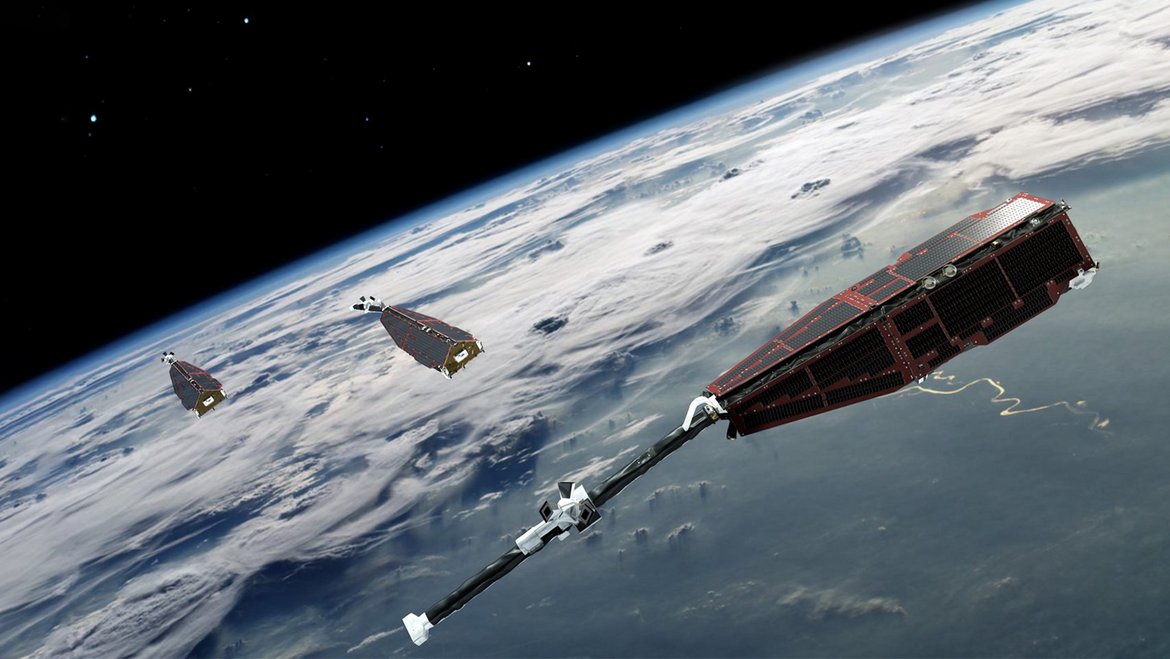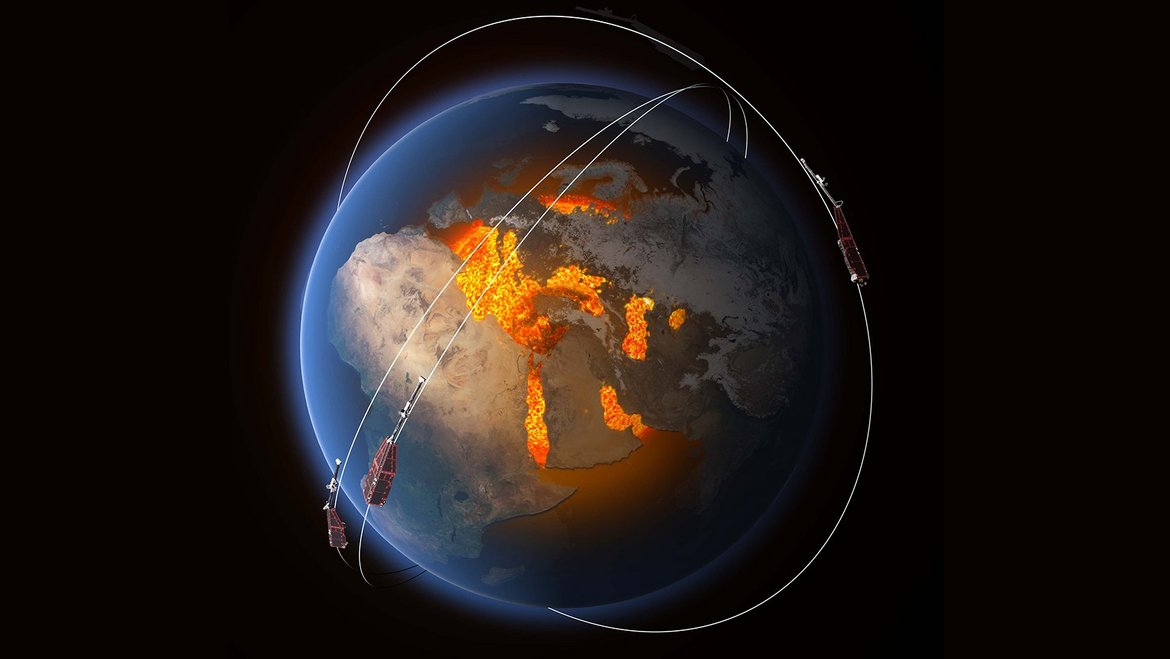ESA Satellite Mission Swarm
Contact:
Web:
Infrastructure belongs to:
Swarm, the fifth Earth Explorer mission approved in ESA's Living Planet Programme and launched on November 22, 2013, 1:02 pm (CET), consists of a constellation of three identical satellites in near-polar orbits between 400 and 550 km altitude.
The main objective of the Swarm mission is to provide the best ever survey of the geomagnetic field and its temporal evolution, and gain new insights to improve our knowledge of the Earth's interior and near-Earth's magnetic environment. Observations of the strength and direction of the magnetic field, the electric field and plasma densities and temperatures, navigational signals, and derived parameters enable novel research on the understanding of the various sources of the geomagnetic field.
GFZ has supported the mission development and scientific product definition, and is involved through several scientific and coordinating activities for its calibration and scientific exploitation.
Categories
Data Types
Disciplinary Keywords
Instrumentation
All the three Swarm satellite are equipped with a set of six instruments: Absolute Scalar Magnetometer (ASM), Vector Field Magnetometer (VFM), Star Tracker (STR), Electric Field Instrument (EFI), GPS Receiver (GPSR) and Accelerometer (ACC).
At the tip of 4 meter boom a scalar helium magnetometer for highly accurate field strength determination is located. The Optical bench consists of three star cameras and vector magnetometer. The star cameras measure the orientation of the satellite up to one thousandth of a degree. For gravitational field measurements, a three-axis accelerometer is mounted in the center of gravity of the satellite. This position ensures that the measuring device is not disturbed by the orbit dynamics, but only measures the forces acting on the spacecraft, e.g. Air resistance and light pressure. The measurement of air density and wind also makes the accelerometer possible. The ionosphere is investigated by the electric field instrument. The ion dispenser is its core and will measure the direction and velocity of the incoming ions. Of these sizes, the ion drift, the surrounding electric field, the ion type and temperature can be derived. Two additional Langmuir probes measure the electron density and temperature. A GPS receiver allows precise orbit determination. A laser retroreflector is used on the underside to check the position data. With its help, the distance from the ground can be measured very precisely. The magnetometer load of the 3-axis stabilized spacecraft is directed backwards during flight. The slim shape of the satellite with a small cross-section in the direction of flight allows a long mission time in a low flight altitude.
Instruments
-
Absolute Scalar Magnetometer (ASM)
-
Accelerometer (ACC)
-
Electric Field Instrument (EFI)
-
GPS Receiver (GPSR)
-
Star Tracker (STR)
-
Vector Field Magnetometer (VFM)
Links
Data Publication
Project Webpage
Relationships
- is related to

